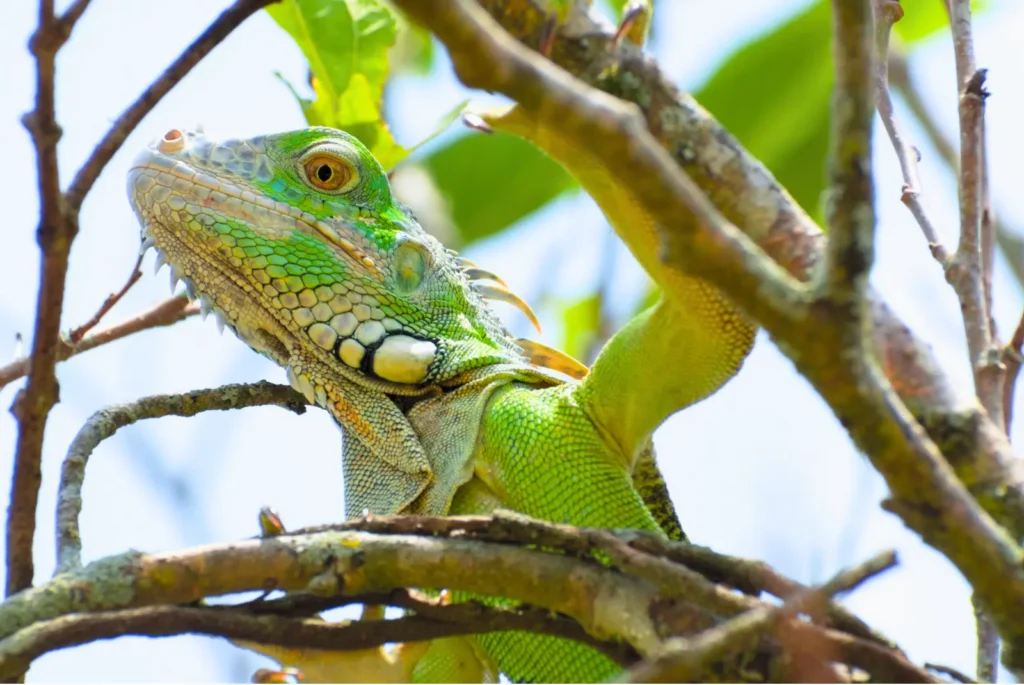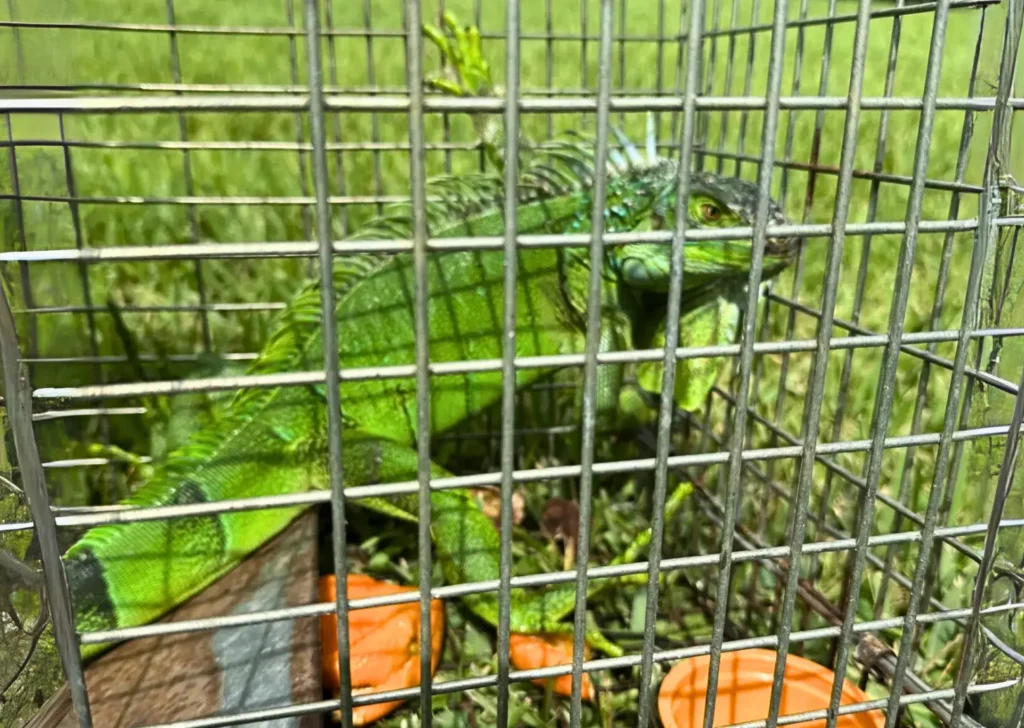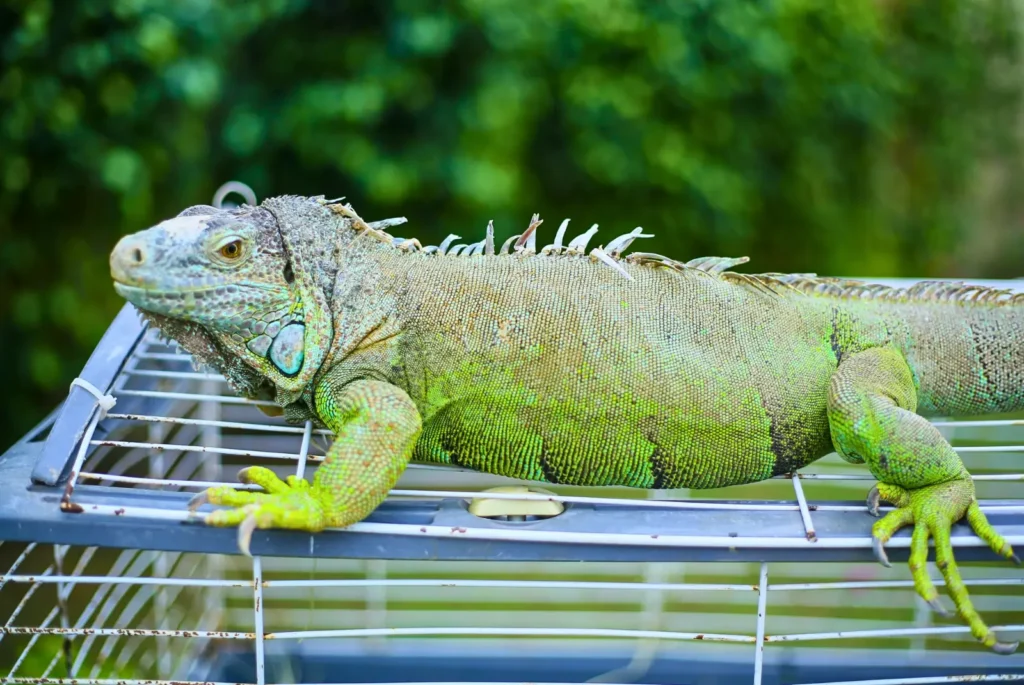Can You Really Smell When It’s Going to Rain?
Why Does It Smell Like Rain Before It Rains in Florida?
The smell of rain comes from lightning-produced ozone, plant oils released from soil called petrichor, and rising humidity. These changes in the air create the fresh, earthy scent people often notice before a Florida storm, giving a natural signal that rain is on the way.
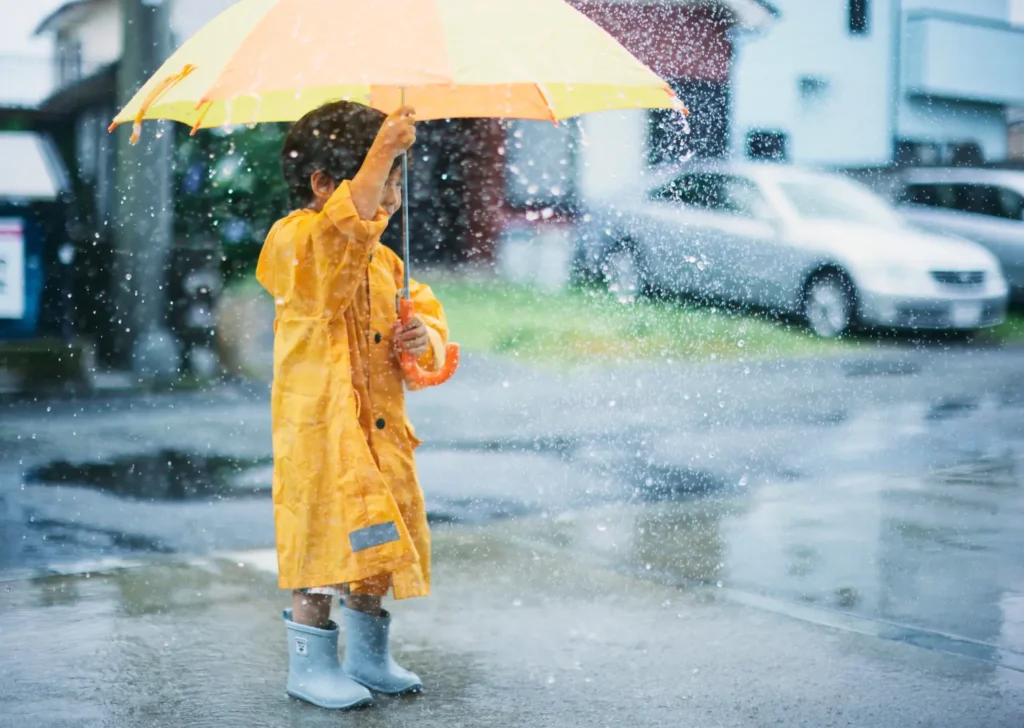
Affiliate Disclosure: Some of the links on this page are affiliate links. This means if you click on a link and make a purchase, Dont Iguana may earn a small commission, at no extra cost to you. We only recommend products and tools we believe are helpful for keeping your Florida property iguana free!
If you’ve ever stepped outside and noticed that fresh, earthy smell right before a storm, you’re not imagining it. People often wonder, “why does it smell like rain?” or “how can I tell when rain is coming?” The truth is, there’s real science behind that familiar scent, and it’s fascinating!
What is Ozone and Why You Smell It
Part of the smell of rain before it rains comes from ozone, a special form of oxygen. You’ve probably heard of the ozone layer high in the sky that protects us from the sun’s ultraviolet rays. But ozone can also form closer to the ground during storms.
When lightning splits oxygen molecules in the atmosphere into single atoms, they combine with other oxygen molecules to form ozone. Winds or downdrafts from storms can carry this ozone toward the ground, giving the air a crisp, almost chlorine-like scent.
Even if it hasn’t started raining at your exact location, in South Florida or Central Florida, you might catch ozone carried by winds from a storm miles away. That sharp, electric smell is nature’s version of a weather alert, helping you know rain is coming before the first drop hits.
For those who want to track storms more closely, home weather monitors and humidity gauges can help you see changes in the air that often signal rain before it starts.
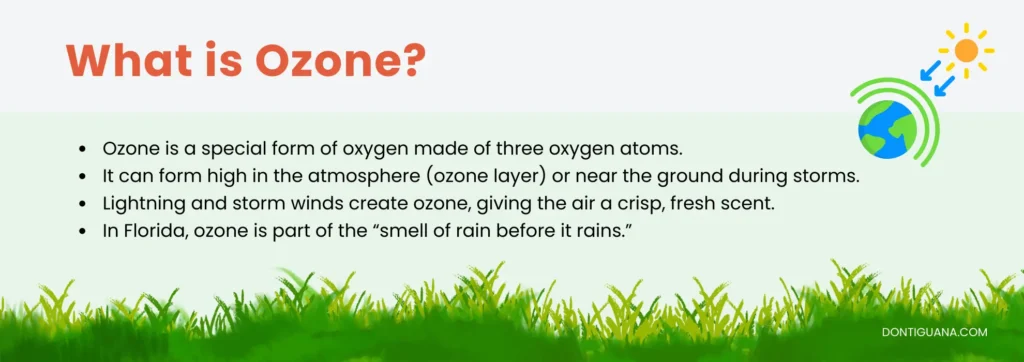
How Can You Know Rain Is Coming Just by Smell?
The scent most people associate with rain, the warm, earthy aroma, is called petrichor. It comes from plant oils and a chemical called geosmin, produced by soil bacteria. When raindrops hit dry soil, these compounds are released into the air, producing the smell we love.
Rainy season in Florida doesn’t just bring that fresh smell, it also brings swarms of mosquitoes. Here’s how to keep them out.
Why Can You Smell It Before the Rain Starts?
A light drizzle or rain in a nearby area can release enough geosmin to travel in the wind. High humidity can release plant oils and amplify soil scents, giving early hints that rain is coming.
In Florida’s sandy soil, especially in South Florida or the Florida Keys, geosmin lingers near the surface, so the first storm of the season, or the first heavy rain after a dry period, produces a particularly strong petrichor. It’s why the smell of rain before it rains can be so intense and distinct.
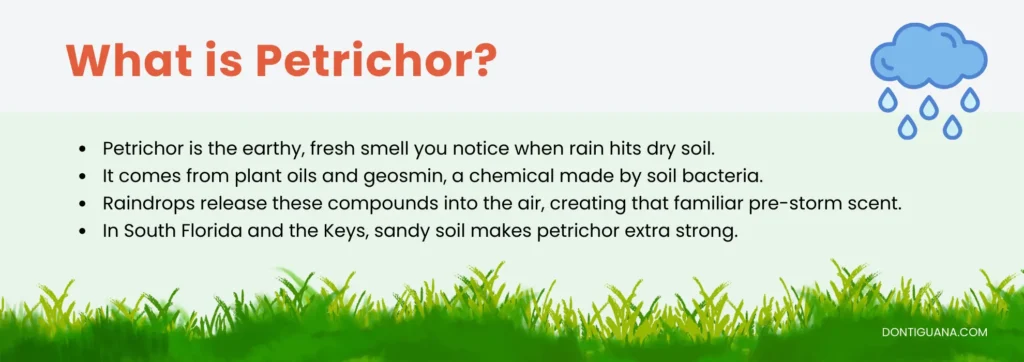
What Makes Florida Storms Smell Stronger Than Elsewhere?
High humidity, which often precedes thunderstorms in South Florida and Central Florida, affects how smells travel through the air. Damp air carries scent molecules farther, and plants release more oils in response to moisture.
The combination of humidity, plant oils, and ozone creates the perfect conditions for your nose to detect a storm before it arrives. A simple backyard rain gauge or soil moisture tool can help you understand how Florida’s sandy soil interacts with rainfall, enhancing the fresh petrichor aroma.
Why Our Noses Are Sensitive to Rain
Humans are naturally tuned to subtle environmental changes. Detecting approaching storms may have helped our ancestors avoid getting caught in dangerous weather. Today, it just means we get to enjoy the amazing fresh rain smell before the sky opens, a little aromatic gift from nature itself.
Florida Storm Facts: Rain Smells and Iguanas

First Summer Storms
In South Florida, the first big thunderstorm after a dry spell can smell especially strong because sandy soil holds geosmin at the surface.

The Keys Effect
Coastal winds carry ozone and petrichor farther over salt flats and mangroves, letting you smell storms before they reach land.

Iguana Alert
Some locals notice that iguanas act restless before storms, climbing to higher perches, so if you catch the rain smell and see active iguanas, the storm is likely close.

Storms From Afar
Florida thunderstorms can form inland and travel long distances, so catching a rain scent early sometimes means the storm is still miles away.
What The Smell Really Is
You’re not actually smelling rain itself. Instead, your nose detects changes in the air: lightning-produced ozone, earthy plant oils released from soil, and rising humidity. These shifts create what many describe as the smell of rain before it rains, that fresh, clean scent that signals a storm is coming.
So the next time you notice that familiar scent in South Florida, Central Florida, or the Florida Keys, you’ll know it’s more than just a feeling. It’s science at work, giving you a natural signal that rain is on the way. Keep umbrellas, ponchos, and rain coats on hand to enjoy Florida storms throughout the year.
Have you ever wondered what happens to iguanas during a hurricane and where they go? We’ve got you covered!
